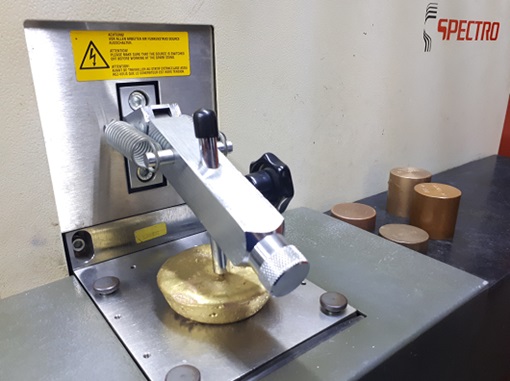|
SPECTOMETRY
Emission spectrometry is a spectroscopic technique that analyzes the wavelengths of the photons emitted by atoms or molecules during their transition
from an excited state to a lower energy state.
HOW DOES IT WORK?
This type of analysis allows determining the elements present in a sample and the percentage of each. The method consists in the detection of the
characteristic wavelengths of each element by the excitation of electrons with a spark.
Each element emits a characteristic set of discrete wavelengths depending on their electronic structure. By observing these wavelengths the elemental
composition of the sample can be determined.
There are many ways in which atoms can be brought to an excited state. The simplest method is to heat the sample to a high temperature, causing an
excitation due to the collisions between atoms of the sample.
The atoms released during this process emit a light that is directed to the optical systems. Light is measured by a CCD photosensitive electronic detector
that converts light into electrical charges.
Although the emission lines are caused by a transition between quantized energy states, they have a finite width; that is, it consists of more than one wavelength of light.
IMPORTANCE OF INSPECTION OF ALLOYS
The review of the chemical composition of each of the alloys that are prepared is of vital importance to comply with the rules, place a specific percentage on each element
that composes it and confirm that there is no presence of polluting or harmful elements.
To comply with the purity of the alloys without problems, we use electrolytic grade materials, which also ensure the quality of the parts.
In RICE PROPULSION we have an optical spectrometer calibrated by an accredited laboratory, with which we guarantee the chemical properties of each of our alloys.

ADVANTAGES
· Getting immediate results.
· Measurement accuracy of samples.
· Assurance of chemical composition.
Our alloys comply with the requirements established in the ASTM (American Society of Testing and Materials) or CDA (Copper Development Association) rules.
Some of the most used alloys in our area are:
For Marine Propellers: C86500, C95700 y C95800.
For industrial parts: C86500, C90500, C93200, C93700, C93800, C95400, C95800 and electrolytic grade copper.

|